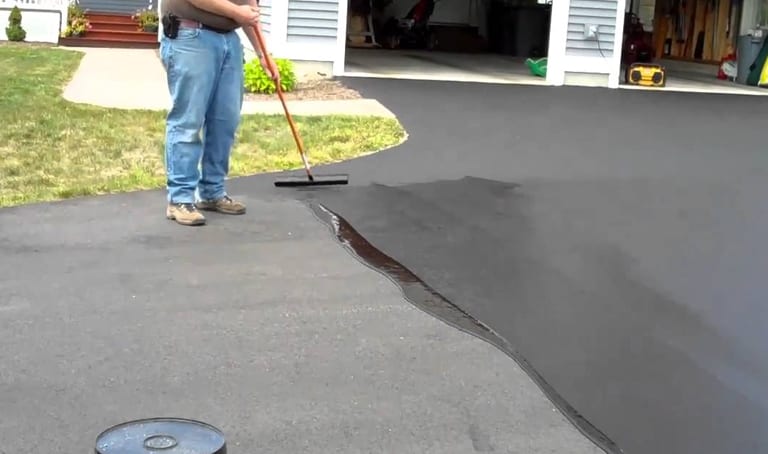Hot Mix Asphalt: A Lasting Option for Pavement
Hot Mix Asphalt (HMA) has emerged as a leading sustainable choice for pavement remedies, supplying a myriad of cutting-edge innovations and environmental advantages. As the need for eco-friendly construction techniques grows, discovering the nuances of HMA's sustainability can supply useful understandings right into the future of sidewalk solutions.
Environmental Advantages of Hot Mix Asphalt

In Addition, Hot Mix Asphalt helps to alleviate city heat island effects. Its dark shade soaks up sunshine, lowering the amount of warm mirrored back into the environment compared to lighter-colored pavements. This can decrease ambient temperature levels in city areas, lowering the need for cooling and ultimately minimizing energy consumption.
On top of that, Warm Mix Asphalt adds to enhanced stormwater administration. Its porous nature enables water to reenergize and penetrate the sidewalk groundwater products, lowering runoff and the danger of flooding. These ecological benefits make Warm Mix Asphalt a sustainable selection for leading roads and freeways.
Energy Performance in HMA Production
Is power effectiveness a crucial factor in the production of Warm Mix Asphalt (HMA)? Absolutely. Energy plays a significant duty in the manufacturing of HMA, impacting both cost and environmental sustainability. One essential facet of energy performance in HMA production is the use of cozy mix asphalt (WMA) modern technologies (regrading). WMA permits the blending and placement of asphalt at lower temperature levels contrasted to standard warm mix asphalt, leading to reduced energy usage during manufacturing. This process not only decreases gas use but additionally decreases greenhouse gas exhausts, making it a much more eco-friendly alternative.
Moreover, innovations in plant innovations have led to even more energy-efficient HMA manufacturing procedures. By maximizing power usage in HMA production, the market can reduce its carbon footprint while keeping high-grade pavement materials.
Recyclability of Warm Mix Asphalt
The recyclability of Hot Mix Asphalt (HMA) is a crucial facet of its sustainability and lasting environmental effect. HMA is one of one of the most recycled products in the USA, with over 100 million lots of reclaimed asphalt sidewalk (RAP) being recycled each year in brand-new pavement building. Recycling HMA uses numerous environmental benefits, such as decreasing the requirement for virgin products, reducing energy consumption during production, and decreasing the quantity of waste sent out to garbage dumps.
The process of recycling HMA includes grating the existing pavement, squashing it right into smaller pieces, and blending it with new aggregate and asphalt binder to create a recycled mix. This recycled mix can typically perform along with or also better than standard HMA, while requiring less raw products and creating reduced greenhouse gas exhausts. By incorporating RAP into new sidewalk jobs, road companies can preserve all-natural sources, decrease prices, and reduce the environmental footprint of road building and upkeep activities. Generally, the recyclability of HMA plays a significant role in promoting sustainable practices within the pavement market.

Long-Term Efficiency of HMA
Asphalt sidewalks show durability and durability over an extended duration, reflecting the lasting performance of Hot Mix Asphalt (HMA) Additionally, developments in HMA modern technology, such as the use of polymer-modified binders and warm mix asphalt, have further boosted the longevity and durability of HMA pavements. By focusing recommended you read on high quality construction and upkeep practices, HMA proceeds to verify itself as a lasting and economical service for resilient sidewalk infrastructure.

HMA: Resilience and Sustainability
Showing both toughness and sustainability, Hot Mix Asphalt (HMA) has come to Website be a foundation in the building of resilient pavement facilities - angled parking. HMA's toughness originates from its capability to hold up against hefty loads, severe weather, and high website traffic quantities, making it a trusted option for roadways, freeways, and flight terminal runways. The structure of HMA, which normally includes aggregates, binder, and filler, plays an essential duty in enhancing its long life and resistance to deterioration
Furthermore, HMA's sustainability exists in its recyclability and energy-efficient production process. The capability to recycle recovered asphalt sidewalk (RAP) in brand-new HMA mixes minimizes the need for virgin materials and decreases the environmental effect of pavement construction and maintenance. Furthermore, the power efficiency of producing HMA depends on its lower blending temperature levels find more info compared to other sidewalk products, bring about reduced energy intake and greenhouse gas discharges.
Final Thought
Finally, warm mix asphalt (HMA) offers a lasting option for pavement with its eco-friendly features. HMA's recyclability, energy efficiency in production, and long-term sturdiness make it an environment-friendly choice for roadway construction. By conserving all-natural resources, minimizing waste, and reducing greenhouse gas exhausts, HMA plays a crucial role in advertising sustainability in facilities growth. Its ability to minimize urban warm island effects further highlights its relevance in producing ecologically aware and resistant pavement systems.
HMA is one of the most recycled products in the United States, with over 100 million tons of reclaimed asphalt pavement (RAP) being reused yearly in brand-new pavement construction.The procedure of reusing HMA involves milling the existing sidewalk, crushing it into smaller sized items, and blending it with new aggregate and asphalt binder to develop a recycled mix.Asphalt pavements demonstrate durability and strength over an extensive period, mirroring the long-lasting efficiency of Hot Mix Asphalt (HMA) In addition, innovations in HMA innovation, such as the usage of polymer-modified binders and warm mix asphalt, have actually further boosted the durability and long life of HMA sidewalks. The capability to recycle reclaimed asphalt pavement (RAP) in new HMA mixtures lowers the demand for virgin products and lessens the environmental effect of pavement construction and upkeep.